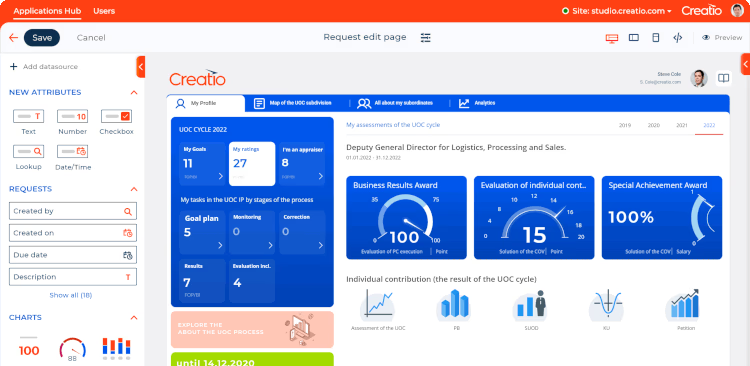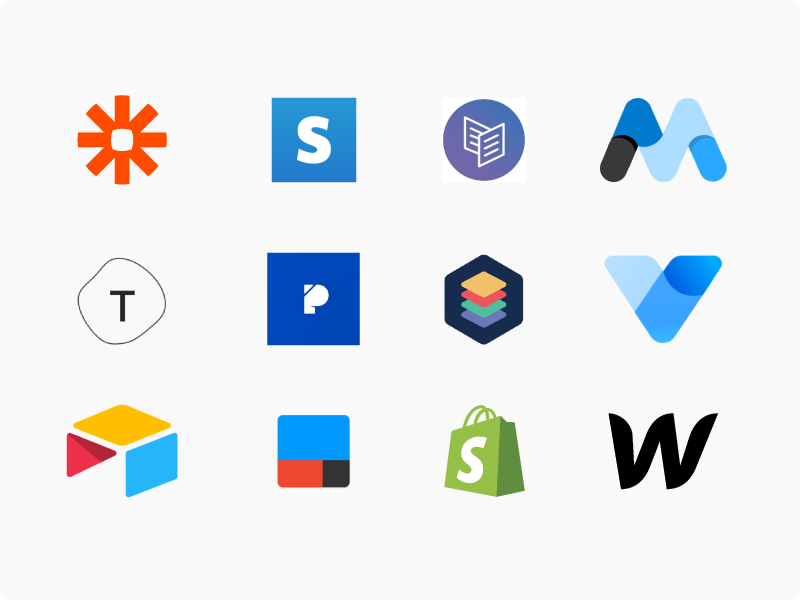Just How No-Code Equipment Simplify Open System Database Production for Everybody
Just How No-Code Equipment Simplify Open System Database Production for Everybody
Blog Article
Discovering the Advantages of Scalable Databases That Need No Coding Abilities for Efficient Information Management Solutions
The introduction of scalable databases that remove the necessity for coding abilities offers a transformative possibility for companies seeking effective data administration solutions. By enabling non-technical users to harness the power of data through user-friendly user interfaces, these systems improve availability and foster partnership throughout diverse teams. In addition, their cost-effectiveness and versatility to progressing company requirements can considerably enhance functional processes. As we think about the effects of such improvements, it ends up being important to examine just how they can improve the landscape of information administration and drive sustainable growth in a competitive setting.
Boosted Access for Customers
Enhanced ease of access for customers is a crucial facet of scalable data sources, making sure that data administration systems are straightforward and instinctive. In a period where data-driven decisions are extremely important, availability allows a larger variety of individuals, including those without comprehensive technical proficiency, to engage with database systems properly. This democratization of information gain access to facilitates enhanced collaboration across divisions, encouraging workers to make and remove understandings informed decisions.
Easy to use interfaces, such as drag-and-drop attributes and visual information depiction, simplify intricate data communications. These improvements minimize the discovering curve connected with standard data source administration, allowing customers to concentrate on leveraging information as opposed to coming to grips with technical intricacies. Scalable data sources usually include adjustable dashboards and real-time analytics, providing individuals with immediate insights customized to their specific demands.

Cost-Effectiveness and Resource Financial Savings
Efficient data administration not only hinges on accessibility however also on cost-effectiveness and resource financial savings. Scalable data sources designed for customers without any coding skills considerably reduce financial problems normally related to standard data source administration systems. By removing the requirement for specialized shows competence, organizations can allocate their resources a lot more effectively, focusing funds on core company tasks instead of extensive training or hiring knowledgeable workers.
In addition, these databases commonly make use of cloud-based remedies, which additionally decrease expenses connected to hardware and maintenance. Organizations can scale their database services according to their demands, avoiding the costs incurred from over-provisioning resources. This flexibility means businesses can adapt to transforming demands without incurring unneeded prices, causing significant long-term savings.
Furthermore, user-friendly user interfaces streamline information entry and monitoring processes, decreasing the moment invested in administrative jobs. This efficiency equates into labor price savings, allowing teams to concentrate on calculated initiatives as opposed to routine maintenance. On the whole, taking on scalable databases that require no coding skills fosters an extra cost-efficient approach to information administration, making it possible for companies to optimize their sources while preserving high levels of operational performance.
Improved Collaboration Throughout Teams

Additionally, scalable databases help with smooth communication among staff member. With user-friendly user interfaces that call for no coding abilities, workers can conveniently create, change, and share reports or control panels tailored to their particular needs. This democratization of information equips non-technical individuals to contribute insights, enhancing the joint environment.
In addition, these databases support concurrent accessibility, permitting several customers to deal with the exact same dataset concurrently. This attribute boosts performance, as groups can engage in joint information evaluation without the risk of variation control problems. The capability to leave notes or comments straight within the database further promotes discussion and clears up data interpretations.
Streamlined Data Monitoring Processes
In today's data-driven setting, organizations identify the requirement of structured data management processes to take full advantage of effectiveness and precision. By leveraging scalable data sources that need no coding skills, companies can simplify their data handling and decrease the intricacies usually related to traditional data source systems. This availability equips non-technical customers to involve straight with information, helping with quicker decision-making and lowering dependence on specialized IT personnel.
Streamlined data administration processes enhance workflow by automating routine tasks such as data entrance, validation, and coverage. Automated information assimilation makes sure that information from different resources is aggregated perfectly, getting rid of silos and promoting a linked view of vital company metrics (no-code). In addition, user-friendly user interfaces permit personnel to manipulate data easily, enabling them to create understandings that drive critical efforts without the requirement for substantial training.
This performance not click here for info just accelerates functional procedures but additionally reduces the capacity for human error, making sure that information stays precise and trusted. Ultimately, structured information monitoring processes with scalable data sources lead to boosted performance, allowing companies to concentrate on core tasks while making certain that their information monitoring methods are efficient and effective.
Scalability for Growing Businesses

For broadening enterprises, the ability to scale up or down is essential. A scalable database can handle an influx of data generated from new customers, items, or solutions, making sure that service operations remain nonstop. These data sources provide the ability to take care of peak tons effectively, which is vital during durations of rapid development or seasonal spikes.
In addition, lots of scalable data source remedies are made with straightforward user interfaces that require no coding skills, equipping non-technical staff to handle information effectively (no-code). This democratization of data monitoring enables companies to designate sources purposefully and lower reliance Visit Website on specialized IT employees
Ultimately, taking on a scalable data source not just enhances functional effectiveness yet additionally cultivates an atmosphere where companies can introduce and develop without the constraints of traditional data source systems. This versatility positions organizations for lasting success in today's affordable landscape.
Conclusion
Finally, scalable databases that require no coding skills provide considerable benefits for reliable information administration. These systems enhance availability for non-technical individuals, decrease operational expenses, and advertise partnership across groups. By improving information administration procedures and providing scalability for growing services, such remedies make it possible for organizations to adapt to changing demands efficiently. Inevitably, the adoption of these straightforward databases fosters innovation and positions companies for long-lasting success in a vibrant environment.
Boosted access for users is a vital aspect of scalable data sources, making sure that data administration systems are user-friendly and user-friendly.Straightforward user interfaces, such as drag-and-drop attributes and visual information depiction, simplify complicated data communications. Generally, adopting scalable data sources that need no coding skills fosters a much more economical method to information administration, enabling companies to maximize their sources while keeping high degrees of operational performance.
By leveraging scalable databases that require no coding skills, services can streamline their data handling and decrease the complexities typically linked with conventional database systems - no-code.Streamlined information administration procedures boost workflow by automating routine jobs such as information access, validation, and reporting
Report this page